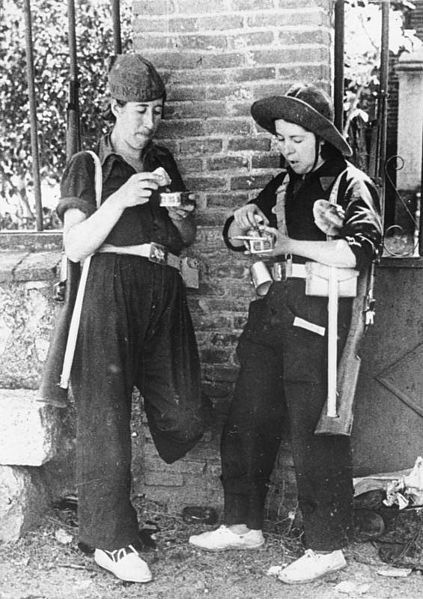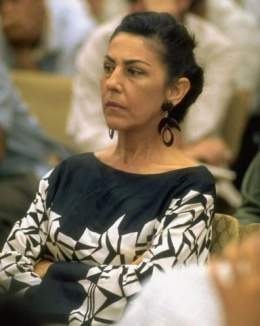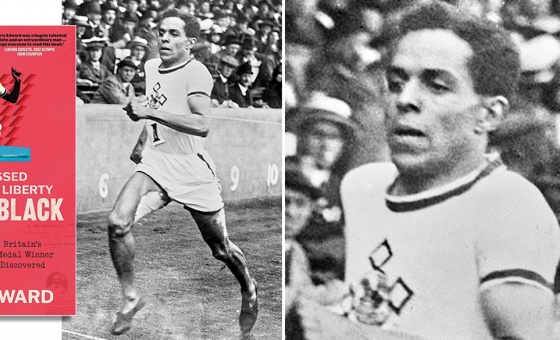This is the last article you can read this month
You can read more article this month
You can read more articles this month
Sorry your limit is up for this month
Reset on:
Please help support the Morning Star by subscribing here
WHY is it that when you ask someone to consider great communist revolutionaries, the first ones to come to mind are men? Marx, Engels, Lenin, Stalin, Gramsci, Guevara, Castro, Connolly and so on.
That question isn’t being posed to diminish their status as some of the greatest communist revolutionaries; each of the names above have written theory which is still being read and acted on today — and in some cases they gave their lives for the struggle for socialism.
The Russian Revolution was arguably the first major win for an organised proletariat and historians generally all agree that the February Revolution saw huge advances in material gains for the women’s rights movement.
This was triggered by women like Alexandra Kollontai, whose writings on topics like the oppression of women in the home are still being discussed. Huge gains were made under the leadership of Lenin, such as childcare being provided in workplaces and divorce being made much more easily obtainable.
The role of women during the Spanish Civil War of 1936-39 has again been hugely underestimated, undervalued and downplayed. Much of the existing primary and secondary literature attempts to argue that the role women played during the war was inferior to that of the role of men, due to its more domestic nature.
However, more recently written sources have attempted to address this imbalance by stating that there was little to no difference between the military work carried out for the Republican side done by women and that which was done by men.
The founding of the Second Spanish Republic saw a huge social revolution and with it, material gains for women: universal suffrage, employment in government and local bodies without the need for all-women shortlists and divorce.
These changing material conditions led to a change in popular perceptions of what women were capable of and were thus a foundation for the republic’s decision to send women to the front line against the fascists and therefore the similarities played in the Spanish Civil War by both sexes were reflective of wider macrocosmic societal and cultural changes.
A further novel aspect for many Spanish women was the fact, for many, this was not only the first armed conflict they had fought in, but even for the ones with previous military experience, certainly the first they were treated as equal to their male counterparts.
The majority of “milicianas” (militiawomen) in Partido Obrero de Unificacion Marxista (Workers’ Party of Marxist Unification) participated in combat to the same extent as their male counterparts, despite the women also having to complete the domestic labour tasks.

This simultaneous progression and regression in women’s equality is something Marxist feminists term “the double burden,” the concept which describes women gaining material rights in the workplace, whilst still being expected to do just as much domestic labour at home. This shows that even among left groups, women were still being oppressed for their domestic labour.
Of the milicianas, perhaps the best known is Lina Odena, who, from the very offset of Franco’s fascist insurrection, organised her own militias in Almeria.
Lina Odena bravely gave her life for the causes of socialism, internationalism and anti-fascism, when on September 13, 1936, her and a comrade were surrounded by Nationalist forces. Rather than be captured and face the brutal rape and torture of Franco’s men, she used her last bullet to shoot herself and died a Republican martyr.
She would never know that the attack plans she had laid out for her battalion would be successful, culminating in military gains for the Republican side.
Another key, but forgotten, figure in socialist history is Celia Sanchez, spearhead of the Cuban Revolution — but many have never even heard of her.
In 1959, at the beginning of the revolution, Cuban women were not just passive receivers of the benefits of a changing society, but rather an active figure in its very creation. There were many all-women groups active in the Cuban Revolution, such as Unidad Feminina Revolucionaria (Revolutionary Women’s Unity) and the Women’s Section of the July 26 Movement, which would eventually culminate in the Federation of Cuban Women, or FMC.

The FMC became a revolutionary body in its own right, which countered women’s domestic labour by using it for the revolution, rather than alongside traditional military skills. They relied on the specific skill set of female Cuban homemakers, such as cooking, cleaning and sewing.
Later, these same woman of the FMC would lead Health Brigades and teach sewing classes to the revolutionary soldiers — and whilst they received criticism for this at the time, it was justified by both the FMC and Fidel Castro as “this focus on simple domestic tasks allows us to reach and motivate women… and explain to them the objectives of the revolution and their role in it.”
In the years following the Cuban Revolution, hugely significant material gains for women were continually won. Due to the huge number of Health and Education brigades led by “federadas” (members of the FMC) who located illiterate Cubans, specifically those in rural areas and brought them to Havana for literacy education, 1970s Cuba was markedly different to that of the 1940s, as thanks to the training provided by the federadas, the majority of Cuban women were now in employment.
Furthermore, the FMC went beyond employing women in strictly gendered jobs and branched out their training to include jobs like watch technicians, tractor drivers and harvesters of fruit, tobacco and coffee.
Women’s role in building socialism was evident in Scotland too, with Mary Barbour organising the rent strikes of Red Clydeside in 1921 and Helen Crawfurd, member of the Communist Party, who also organised tenants and would go on to become the first woman elected to Dunoon Council in 1946.
Clearly, women and socialism are symbiotic — intertwined and interdependent. Women are utterly integral to the success of any socialist movement and women’s liberation can only come about because of socialism.
Zoe McKeown sits on the Unite Youth Committee.










